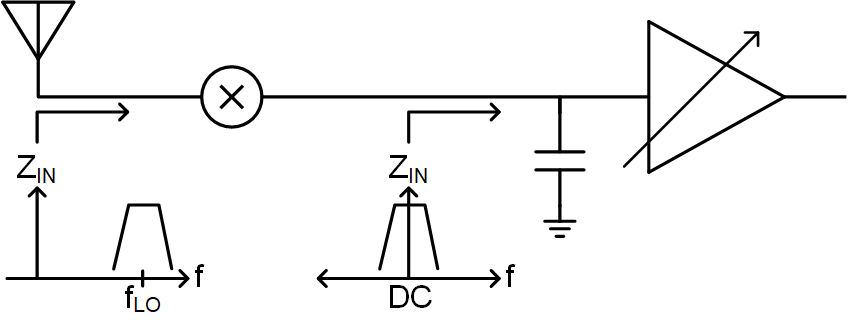Stephen Weinreich
MS, Electrical Engineering, Stanford University, 2016
BS, Electrical Engineering, Brown University, 2014
Email: weinreich AT stanford DOT edu
**An adaptive NB-IoT antenna interface using frequency-translated baseband impedances**
Wide-area narrowband internet-of-things cellular standards, recently adopted in Release 13 of the 3GPP LTE standard, address wide coverage for high-value concise internet connectivity in a constrained energy budget. One of these new standards is NB-IoT (category NB1), enabling 10 year battery life at 10 kilometer distances from the base-station and into buildings and basements. Despite this, the antenna-receiver interface is a bottleneck due to the desire to exploit propagation benefits of longer wavelength (sub-GHz) spectrum and the electromagnetic realities of small antennas. This project looks at innovative solutions to handle this problem using frequency-translated baseband impedances.
**The NB-IoT standard**
The NB-IoT standard targets low-end IoT devices. Peak data rates are limited to 250 kbps due to the 180 kHz signal bandwidth but as a result ultra-low power consumption is achievable. Industrial and environmental sensors are among the IoT applications which require long battery life with low requirements on data rate. Additionally, NB-IoT has multiple deployment options due to its small signal bandwidth. One of these options is within currently unused LTE guard-bands, enabling network access at a lower cost. Another option is deployment within current LTE or GSM spectrum.[1]
**Frequency-translated impedances**
Recent advances in RF interfaces have seen the use of the passive mixer to perform both the filtering and downconversion operations on silicon[2]. Such frequency-translational circuits have been around for over 50 years3, but it is only with recent technology scaling that they have become practical at radio frequencies. In addition to providing an easily tunable, low area, and high Q filter, passive mixers translate the baseband impedances up to RF as seen in Figure 1. In this project we will use a mixer-first receiver in order to exploit this property and achieve enhanced impedance matching for small, high-Q antennas through the use of flexible baseband impedances.

Figure 1: Concept of frequency-translated baseband impedance
[1] 3GPP TS36.101, “3rd Generation Partnership Project; Technical Specification Group Radio Access Network; Evolved Universal Terrestrial Radio Access (E-UTRA); User Equipment (UE) radio transmission and reception,” v13.5.0, Sept. 2016; http://www.3gpp.org/ftp/Specs/archive/36_series/36.101/36101-d50.zip
[2] Andrews, C., & Molnar, A. (2010). A passive mixer-first receiver with digitally controlled and widely tunable RF interface. IEEE Journal of Solid-State Circuits, 45(12), 2696–2708. http://doi.org/10.1109/JSSC.2010.2077151
[3] Franks, L. E., & Sandberg, I. W. (1960). An Alternative Approach to the Realization of Network Transfer Functions: The N -Path Filter. Bell System Technical Journal, 39(5), 1321–1350. http://doi.org/10.1002/j.1538-7305.1960.tb03962.x
